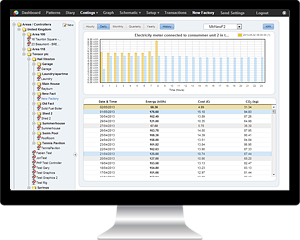Annual Investment in Building Energy Management Systems to Reach $1.6 Billion by 2025

The yearly investment in Building Energy Management Systems (BEMS) for the midmarket customers is expected to grow from $235.6 million in 2016 to $1.6 billion in 2025, a recent research report by Navigant Research has been able to suggest.
The report, Building Energy Management Systems for the Midmarket, points out that, while larger facilities have relied on BEMSs for more than a decade as a way to increase building efficiency through added insight and cost savings, owners and operators of smaller facilities are finding the systems can be just as valuable for buildings in the midmarket.
The intelligent buildings market continues to evolve and the ongoing market education on how these intelligent building solutions can improve the bottom line is helping to accelerate adoption within the midmarket, the researched also revealed.
“The global outlook for BEMSs in the midmarket is optimistic, with aggressive technology adoption following deeper customer understanding of the business benefits of intelligent building software analytics,” says Casey Talon, principal research analyst with Navigant Research. “BEMSs are helping customers realize energy and operational efficiency gains that benefit the bottom line, particularly in the midmarket.”
HeatingSave – slash energy bills and cut carbon emissions in a fast and easy way
Replacing your central heating clock with a HeatingSave energy and boiler management controller is the quickest way of beating those tariff rises and saving on energy costs, often paying for itself in less than a year but almost always in less than 3 years.
HeatingSave can cut your energy usage by 20% to 30% with its energy management control, as its internal microprocessor constantly calculates and improves the efficiency and savings of your central heating system.
Using HeatingSave, simply choose the room temperature and the hot water you want, and when, and HeatingSave does the rest. It works with all central heating systems – oil, gas or coal – and links up with a PC to produce reports and graphs to fashion a powerful and complete energy management system.
The system is backed by the Carbon Trust and the Energy Savings Trust.






